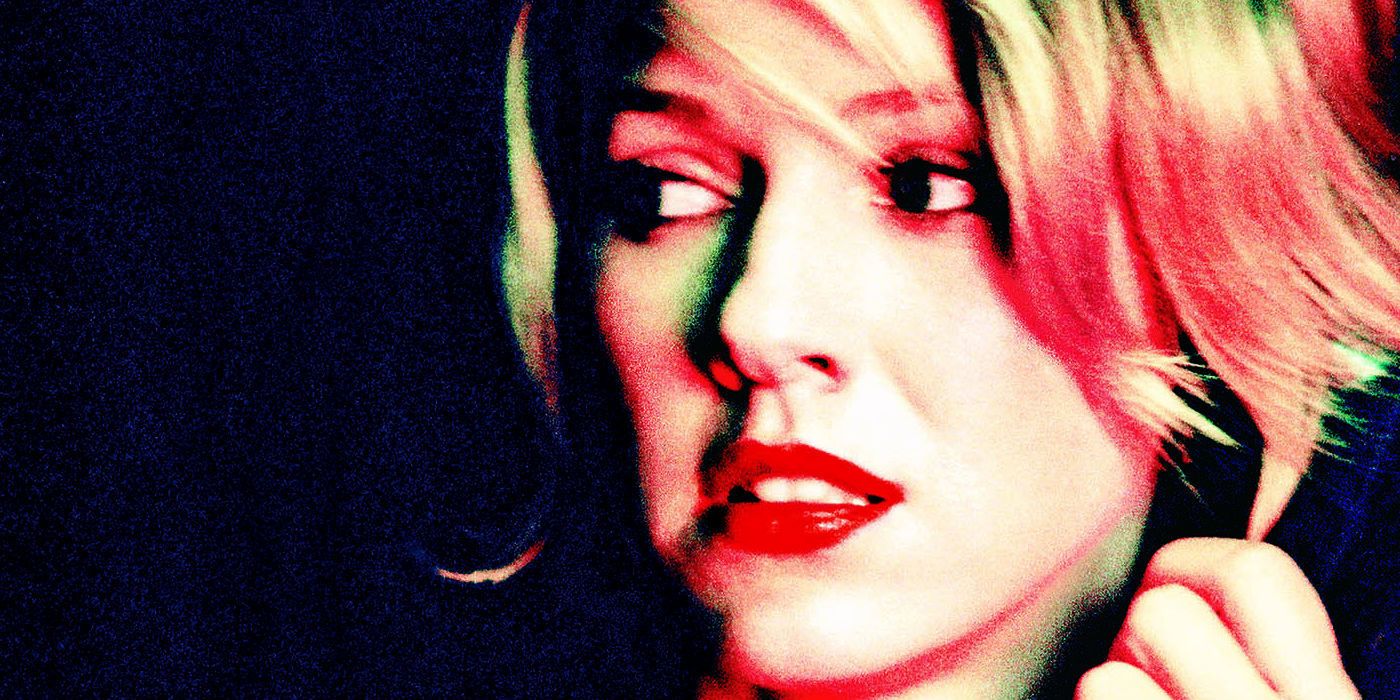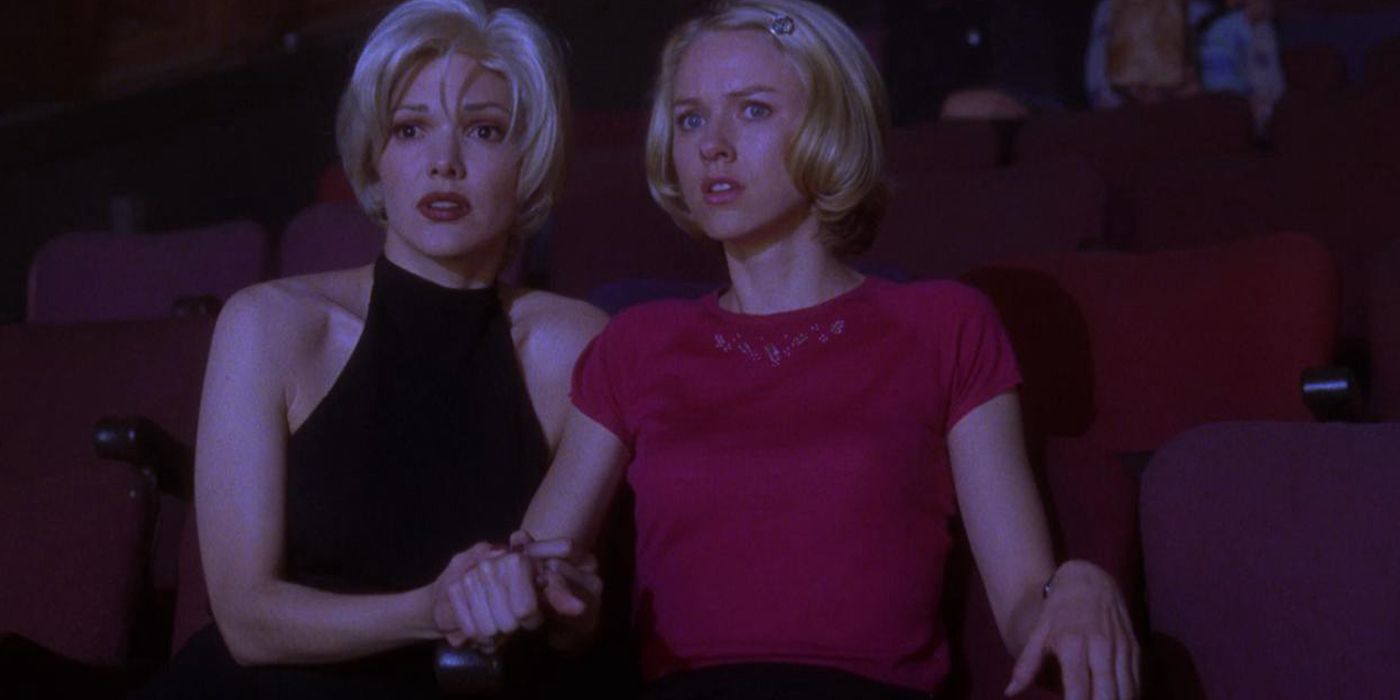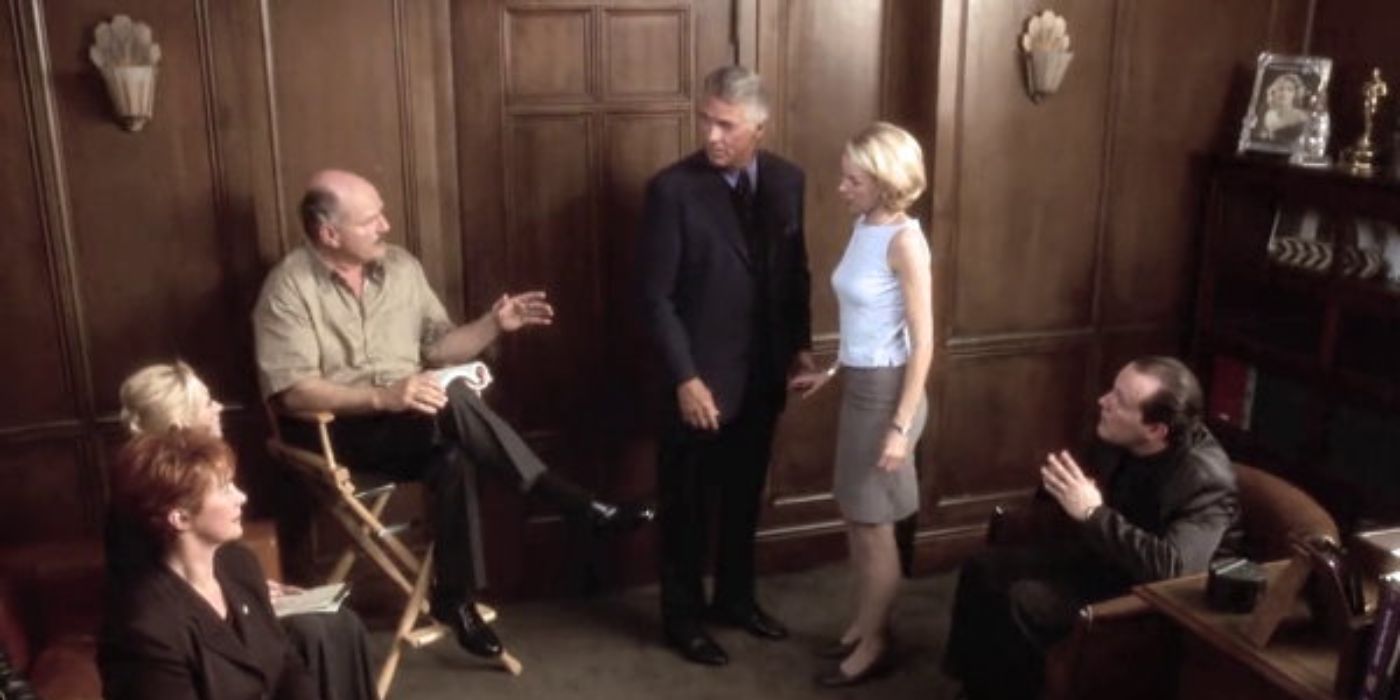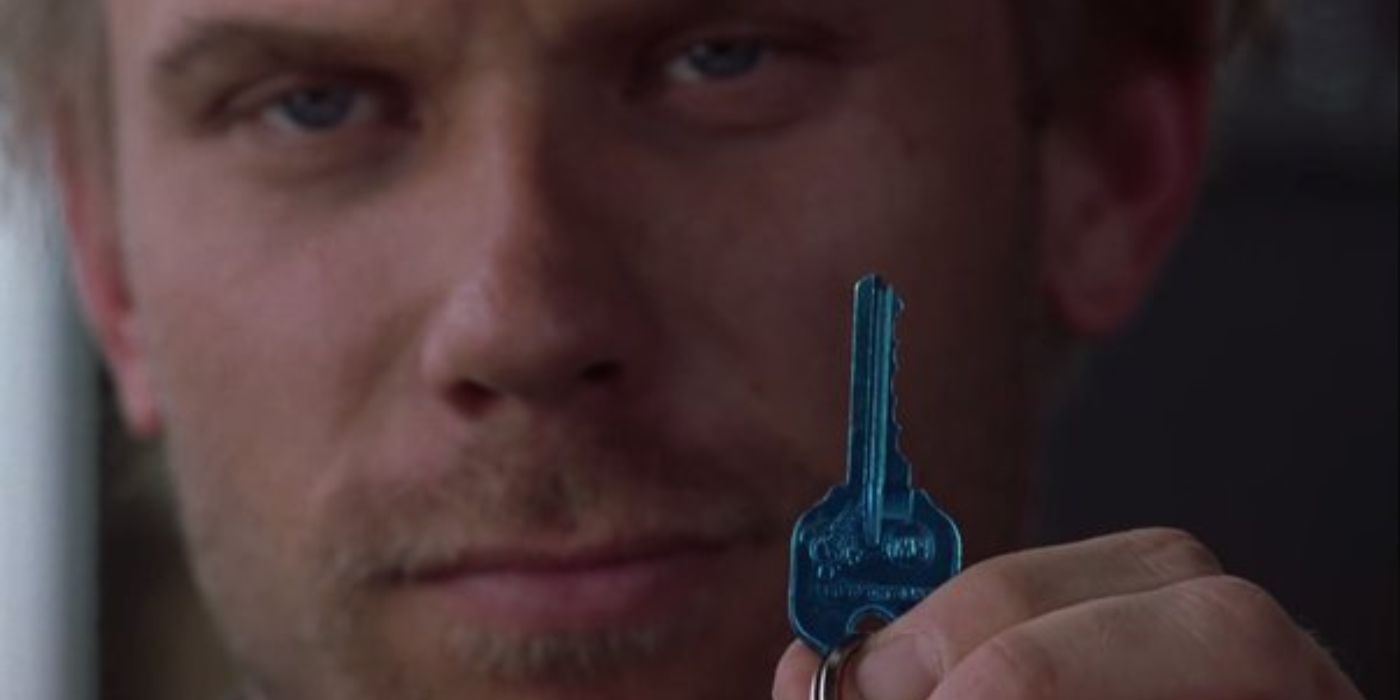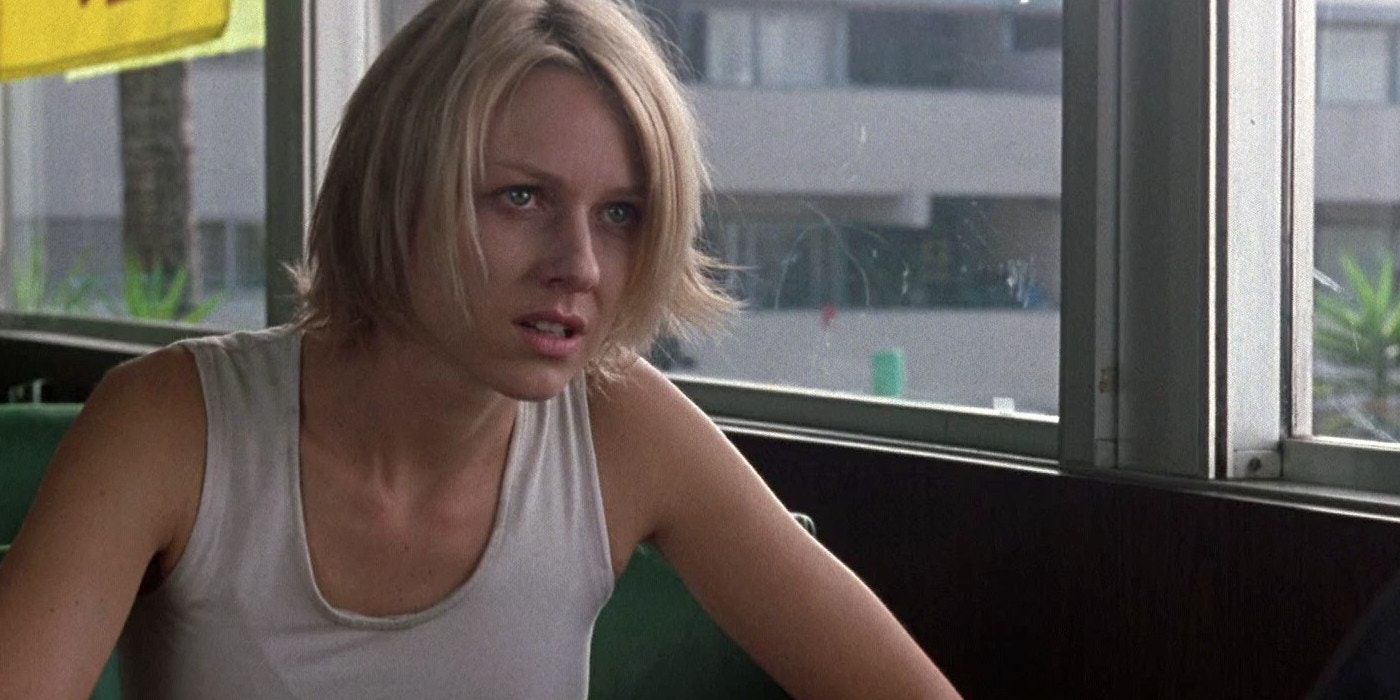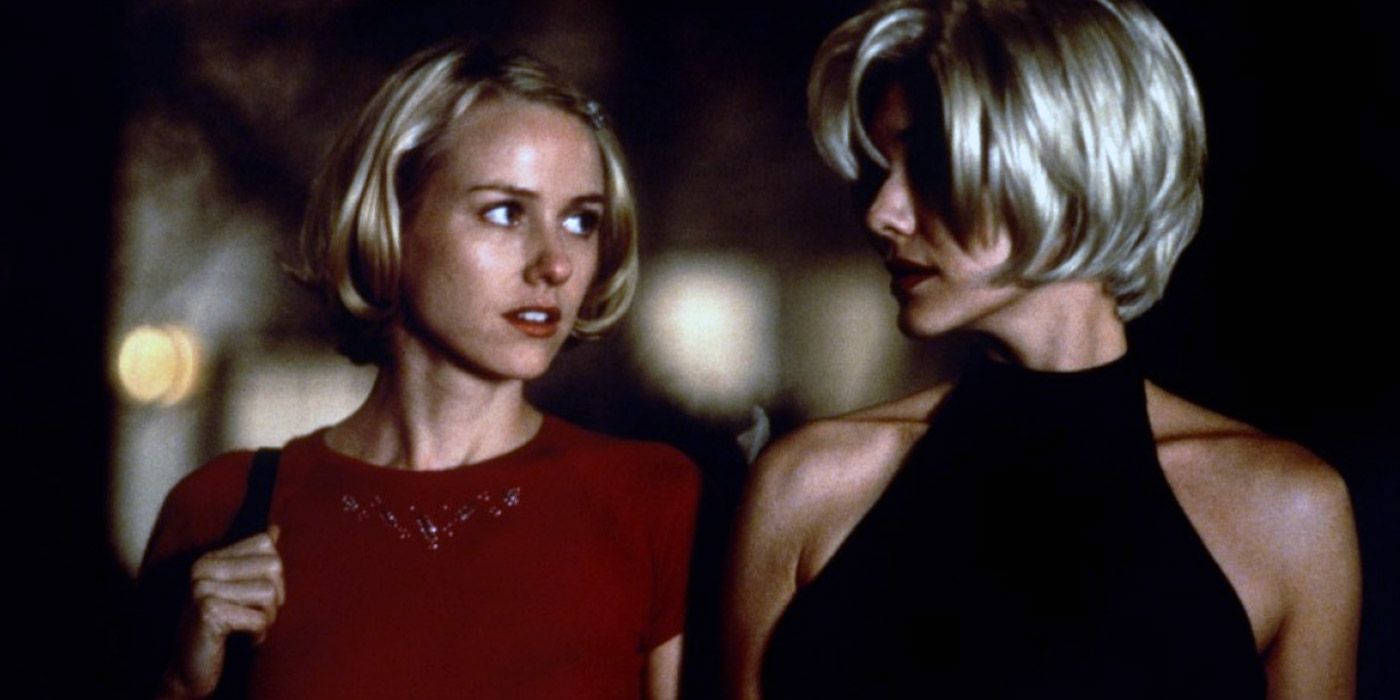Mulholland Drive Ending, Explained
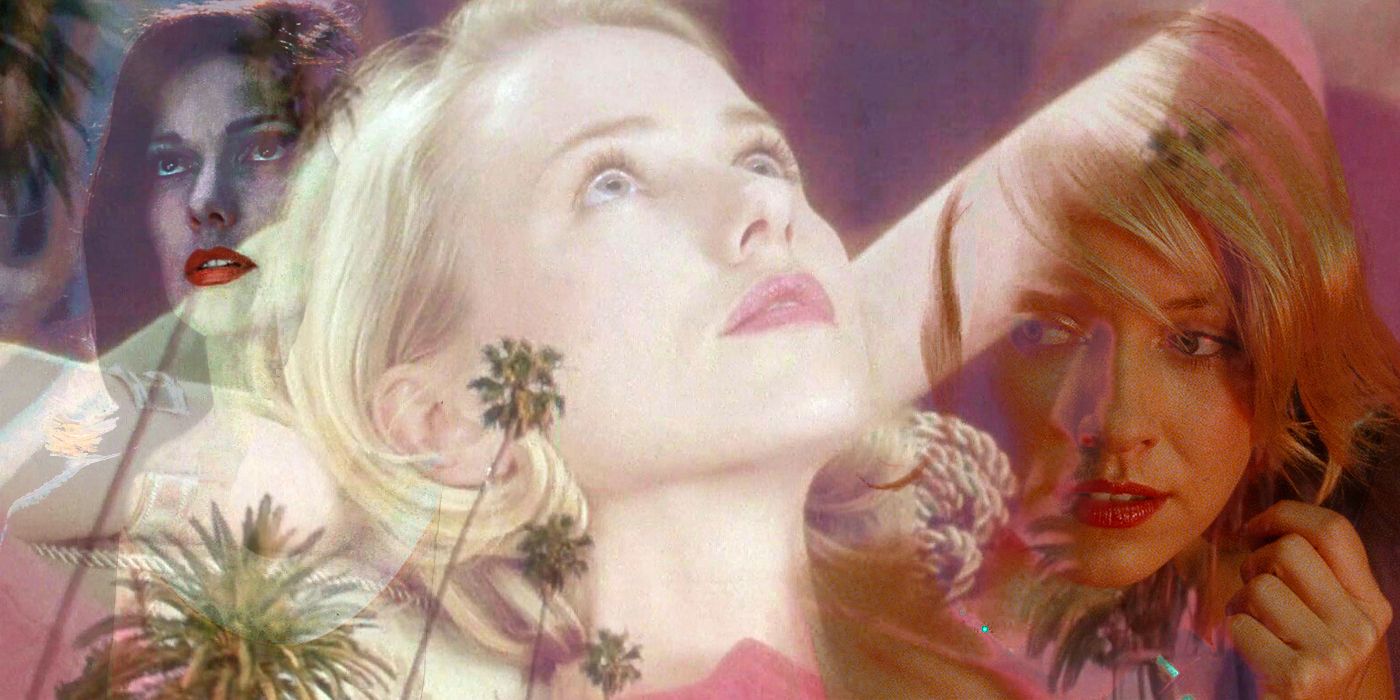
Content Warning: this article contains discussions of suicide and depression.
The jaw-dropping ending of Mulholland Drive delivers more questions than answers, but it’s a fascinating study of the psychology behind dreams. David Lynch’s 2001 film follows two strange women who cross paths in Hollywood: one is an aspiring actress full of dreams and promises, and the other has just barely escaped a lethal car crash and lost all her memory. Together they uncover the ugly truth about the beauty and fame that surrounds them and develop a romance capable of altering reality.
David Lynch’s surrealist storytelling comes in handy since the majority of the movie takes place inside a dream. Mulholland Drive is a thriller at its core but often flirts with horror elements and offers an absorbing romance that feels like a dangerous game, establishing a distinctive neo-noir atmosphere. With its nonlinear narrative and its vast array of characters, Mulholland Drive is often regarded as one of the most confusing yet still brilliant movies ever.
What Happens In Mulholland Drive’s Ending
Mulholland Drive takes a puzzling turn in its final minutes, deconstructing everything it has built so far. Betty (Naomi Watts) and Rita (Laura Harring) disappear, and now the story revolves around Diane Selwyn, a struggling actress who looks exactly like Betty. She wakes up in the same apartment where Betty and Rita found the dead woman, and she reminisces about her deteriorating affair with a successful movie star, Camilla Rhodes, who looks just like Rita. Diane attends a party hosted by Adam (Justin Theroux), now a strong-willed and talented director, where multiple characters who appeared earlier in the movie come and go, taking over different roles.
The party turns out to be a horrible experience for Diane, who witnesses her lover, Camilla, embracing a young woman, the previous “Camilla Rhodes” (Melissa George), and Adam hints at Camilla and him getting married. In a nightmarish sequence typical of David Lynch, Diane sees herself surrounded by smiling, prosperous people, and contemplates her misery as she breaks down in tears. She hires a hitman to kill Camilla but seems hesitant about the plan. Later, Diane is tormented by terrifying hallucinations and distraught with guilt for Camilla’s murder, reaching out for her gun and shooting herself in the same position the decomposing body of Diane Selwyin was found earlier.
Are Diane & Betty The Same Person?
Most of what viewers see in Mulholland Drive is actually a dream that occurs inside Diane’s head, where her distressing reality is replaced by fabricated fantasies. In this dream, she becomes Betty, an innocent young actress with a promising future ahead, and Camilla is Rita, a woman who got involved in a car crash and lost all her memories. Diane’s dream represents a fresh start, an alternate version where the ugly part of her soul can’t interfere.
In one of the many interpretations of Mulholland Drive, Camilla miraculously survives the hit only in the dream and forgets about the life she led before, implying that in Diane’s mind, her affair with Camilla only came to a bitter end because she was a failure and Camilla was one of the most successful actresses of Hollywood. Rita is a blank canvas, enabling Betty/Diane to bend her to her will and mold her image into Rita, which explains why Betty and Rita look the same at the end, with the blonde wig. If they blend into each other, there’s nothing from the other they could possibly want.
The Audition & Theater Scenes Explained
Betty’s audition scene is closely related to the scene where Rita and Betty watch a performance at Club Silencio. The audition is such a turning point because it probably represents the moment the real Diane realized her dreams wouldn’t come true, unlocking valuable clues about Mulholland Drive’s true meaning. Immediately after Betty’s successful, yet uncomfortable audition, the movie cuts to a wonderful and seemingly natural performance, but as the camera pulls backward, a full studio set is revealed. Betty sees that Adam is blown away by her but chooses Camilla Rhodes’ dream version as the lead actress instead.
Adam clearly only does so because he’s dangerously under pressure, connecting to the Club Silencio sequence, in which Lynch highlights to the audience how it’s all fiction and why these characters are desperately trying to escape from reality: as the magician (Richard Green) demonstrates how fragile reality is, Betty’s world begins to crumble. Her mind blames Hollywood’s greedy forces for her shattered dreams, and deep down she thinks Adam chose Camilla over her because he was being coerced by Mr. Roque’s (Michael J. Anderson) men. Mr. Roque’s imposing figure was created by Diane’s troubled subconscious in order to embody the very worst of the film industry.
The Blue Key Explained
The dream version of Joe (Mark Pellegrino), the hitman, is a clumsy man who nearly messes up his mission entirely. The whole office scene in which a simple hit turns into a chaotic chain of events represents Diane’s wishes for Camilla’s hit to go wrong. Her subconscious makes out Joe as an incompetent killer and lighten the violence that surrounds both his actions and Diane’s decision to go through with the hit.
In the cafeteria scene, Diane hires Joe to kill Camilla, and he tells her she’ll soon find a blue key indicating the job is complete. While the blue key symbolizes Camilla’s death in the real world, the object has a totally different meaning in Diane’s dream: the blue key eventually unlocks the reality realm and shatters Diane’s dream, turning Mulholland Drive into one of the scariest non-horror movies. The blue box that the key opens might represent Diane’s pandora box, which unleashes the evils of her mind in her perfect dream world.
Who Is The Real Villain In Mulholland Drive
The dumpster monster is the key to realizing that Diane is Mulholland Drive‘s true villain. When the creature appears later on holding the blue box, one can assume that the monster is the personification of Diane’s ugly part. The scene in which the monster first appears is directly linked to Diane ordering Camilla’s death, thus the moment the monster was born. Diane becomes increasingly obsessed with Camilla’s success and orders her lover’s death out of jealousy. Although Diane succumbs to guilt and clearly suffers from harsh mental conditions, she embraces death as the only way to save her soul, since she isn’t able to find comfort in her dreams.
The True Meaning Behind Mulholland Drive’s Ending
In Mulholland Drive‘s ambiguous ending, it’s funny how much of reality translates into a dream and vice-versa. For example, the cowboy character (Monty Montgomery) tells Adam he’ll appear two more times if things go bad, and that’s exactly what happens when the truth about Diane begins to unfold: although he’s just a random guy at a party, he breaks into Diane’s subconscious as a bad omen. Names also play their part, since “Betty” comes from a waitress Diane sees. Moreover, the man she casually crosses eyes with at the cafeteria is the guy from the monster scene, representing a turning point in her life: the deal with the hitman.
Although Mulholland Drive‘s weird and polarizing nature offers viewers the opportunity to come up with their own conclusions, some easy-to-miss hints and details lead up to a tragic truth. In addition to perfectly capturing the idiosyncrasies of a dream, David Lynch also uses Diane’s trajectory to expose the downfall of Hollywood and the film industry, outlining the L.A. scene as simply a game of egos where talented people and their respective dreams are crashed by an oppressive and outdated system. In a way, Mulholland Drive takes the concept of the “American Dream” and dissects it into a myriad of hopeless characters and cardinal sins.
Share this news on your Fb,Twitter and Whatsapp
NY Press News:Latest News Headlines
NY Press News||Health||New York||USA News||Technology||World NewsTimes News Network:Latest News Headlines
Times News Network||Health||New York||USA News||Technology||World News
